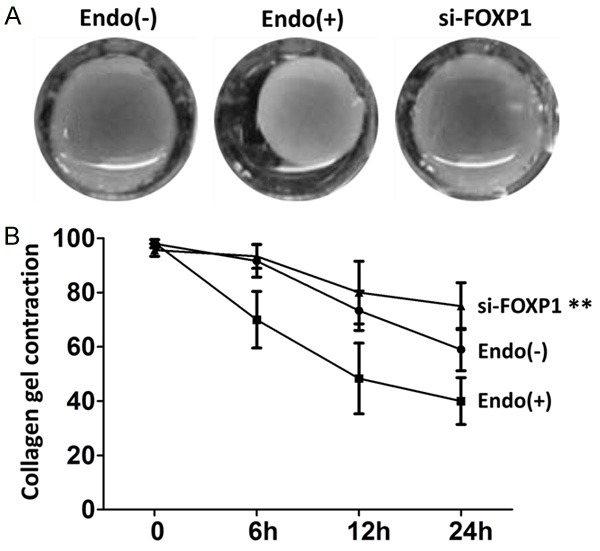Endometriosis is a typical gynecological dysfunction affecting 6-10% girls. Endometriosis is related to extra fibrosis, resulting in power ache, scarring and aberrant tissue operate.
However, molecular and mobile mechanisms underlying fibrosis throughout endometriosis nonetheless stay elusive. In this examine we used endometrial and endometriotic stromal cells remoted from sufferers, and employed siRNA to knockdown Forkhead field protein P1 (FOXP1) to analyze the impact of FOXP1 on collagen contraction, cell proliferation and mitigation.
Western blot and quantitative PCR have been utilized for evaluation of protein and mRNA ranges, respectively. Compared to regulate stromal cells, endometriotic stromal cells from sufferers exhibited increased ranges of FOXP1 expression and Wnt-related β-catenin acetylation.
FOXP1 knockdown decreased not solely Wnt signaling, but in addition the expression of fibrotic marker genes, together with connective tissue development issue, kind I collagen, α-smooth muscle actin and fibronectin.
Furthermore, FOXP1 knockdown reversed the endometriotic mobile phenotypes, together with decreasing collagen gel contraction, inhibiting cell proliferation and migration. Finally, Wnt signaling inhibitor AVX939 blocked β-catenin acetylation and endometrial stromal cell proliferation induced by ectopic FOXP1 expression. FOXP1 enhances fibrosis throughout endometriosis via upregulating Wnt signaling exercise.

LncRNA CASC7 inhibits the development of glioma via regulating Wnt/β-catenin signaling pathway.
Increasing proof reveal the vital position of lengthy non-coding RNAs (lncRNAs) in the initiation and development of glioma. However, the position of lncRNA most cancers susceptibility candidate 7 (CASC7) in glioma is essentially unknown.
At first, the expression stage of CASC7 was examined in glioma tissues and cell traces by utilizing qRT-PCR. We utilized Kaplan-Meier technique to investigate the correlation between the expression stage between CASC7 expression and the general survival charge of glioma sufferers. We discovered that CASC7 was downregulated in glioma tissues and cell liens and predicted poor prognosis for sufferers with glioma.
To decide the involvement of CASC7 in the organic processes of glioma, we performed achieve or loss-of operate assays in two glioma sufferers. We discovered that CASC7 suppressed glioma cell proliferation and induced glioma cell apoptosis.
Mechanistically, the expression stage of CASC7 was negatively correlated with the expression ranges of core components of Wnt/β-catenin signaling pathway in glioma cells.
Moreover, TOP flash luciferase exercise additional revealed the unfavorable impact of CASC7 on the exercise of Wnt/β-catenin signaling pathway. Finally, rescue assays have been carried out to find out that Wnt/β-catenin signaling pathway concerned in CASC7-mediated glioma development. Taken collectively, all analysis findings instructed that CASC7 inhibited the development of glioma via regulating Wnt/β-catenin signaling pathway.
